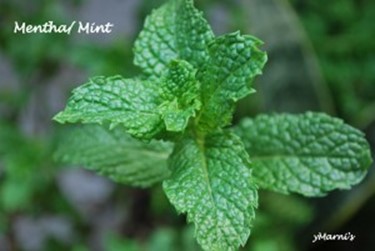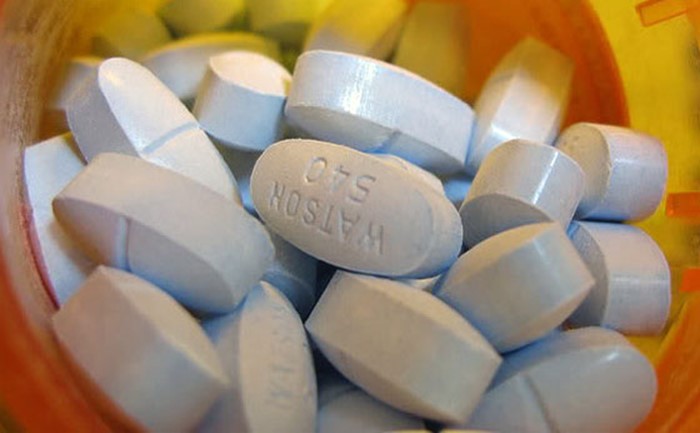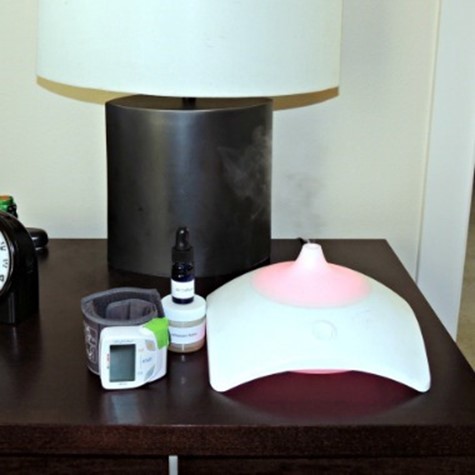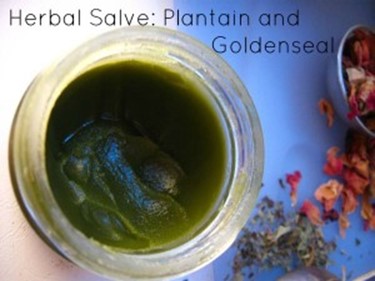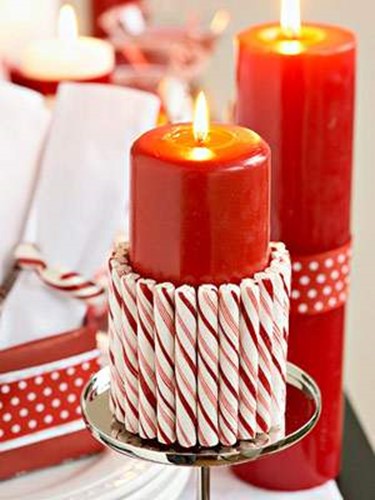When it comes to using essential oils topically, most recipes will simply say “add to a carrier oil and apply”. That sounds simple enough but the reality is that measuring the proper number of drops can be hit or miss. Most EO brands include an orifice style dropper but just when you think you have doled out the requisite drops, more come out. This is not only wasteful, but when it comes to essential oils, using more is not always better.
A solution to this dilemma is to create custom salves, butters, and lotion bars that make the application of essential oils a cinch. Not only is that, crafting these concoctions and using essential oils in this manner fun, especially if you are a do-it-yourself type. When creating your own blends, you can mix and match oils at will or stick to a tried and true healing combination.
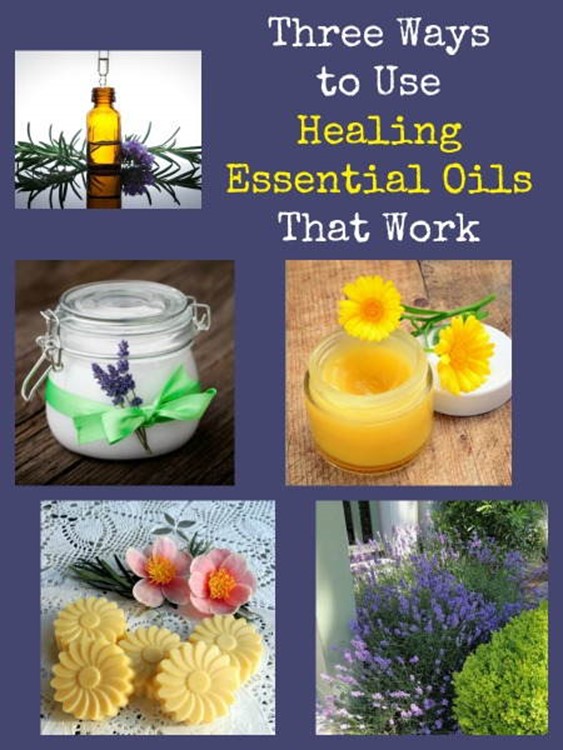
Speaking of a tried and true healing combination, my absolute favorite is a blend that includes equal parts of Lavender, Rosemary, and Peppermint essential oils. I love them so much, that I have convinced my favorite EO purveyor, Spark Naturals, to offer them with free shipping but more about that later.
First, though, I am recapping three essential oil recipes that simply work, and should be in everyone’s natural first aid arsenal. They are a cinch to put together, budget friendly, smell wonderful, and are not in the least bit boring. Not only that, they make a wonderful launching point for some great custom blends of your own.
Miracle Healing Salve – The Recipe
This is the signature recipe that has garnered almost 200 comments from readers on this website. This all-purpose healing salve is truly a multi-purpose miracle worker!
Ingredients:
1 Cup Coconut Oil
1 Cup Extra Virgin Olive Oil
5 Tbl Organic Beeswax Pastilles
Containers:
8 each: 2 ounce jars or containers
** or **
4 each: 4 ounce jars (I use these Mason jelly jars)
Essential Oils:
40 drops Lavender essential oil total
40 drops Rosemary essential oil total
40 drops Peppermint essential oil total
Directions
1. Put a pot of water on the stove to simmer. While the water is heating, add the coconut oil, olive oil and beeswax pastilles in a heatproof jar or measuring cup.
2. Set the jar filled with the coconut oil, olive oil, and wax into the water and leave it there until it melts, giving it a stir from time to time. You want a slow, gentle melt so take your time. It could take 15 or 20 minutes depending on the temperature of the water bath.
3. While the ingredients are melting, drop your essential oils into each of the containers. For 2 ounce jars, use 5 drops of each oil (total of 15 drops per jar). For 4 ounce jars, use 10 drops of each oil (total of 30 drops per jar).
Hint: I have found that it is easier to use a glass medicine dropper than the dropper that comes with the bottle of essential oil. This is optional and a matter of personal preference.
4. Pour the melted oils into each of the smaller jars containing essential oils. There is no need to stir unless you want to since the oils will mix up on their own.
5. Set the filled jars aside for up to 24 hours. Although the salve will start to firm up within minutes, it takes at least 12 hours to complete the firming process.
Healing Body Butter – The Recipe
Ingredients
1/2 cup Shea Butter
1/4 cup Organic Virgin Coconut Oil
1/4 cup (2 ounces) Liquid Carrier Oil (Almond, Olive, Fractionated Coconut, Jojoba, Hemp, etc.)
60 drops essential oils
Suggestion: 20 drops each of Lavender, Peppermint & Rosemary Essential Oils (I use Spark Naturals)
Directions
1. Combine the Shea Butter and Coconut Oil (or other liquid carrier oil) in a large Pyrex cup or mason jar and set on the stove in a pan of simmering water. You can also use a double boiler but this is so much easier. Be sure to use a large vessel so that water does not splatter and contaminate the oils.
2. Gently stir until melted.
3. When thoroughly melted, remove your cup or jar from the water bath and set aside for 5 minutes. During this time, the melted oils will cool just enough to prevent overheating the liquid oils.
4. Add the remaining oils which are already in liquid form as well as the essential oils.
5. Set aside to cool. The butter/oils will begin to harden a bit which is what you want.
Note: I set mine in the refrigerator for 30 minutes to speed the process.
4. Using a hand mixer (I used my blending stick), whip until you have a nice fluffy consistency. If cooled and semi-hardened as described above, this will take anywhere from 5 to 15 minutes so be patient.
Note: Another reason you want to use a large cup or jar to melt the oils is that the whipping process will make a mess all over the place if there is insufficient heat room.
5. Transfer your Simple Body Butter to a scrupulously clean container and you are done. I have used both glass mason jars and plastic jars (like these) with success.
This is a small batch recipe but it can easily be doubled or even tripled.
Of course if you prefer to use different essential oils, you can do that too. Just keep in mind that for this small batch, you will be adding about 60 drops total, depending on the quality of your oils and dilution desired. It has been my experience that the higher quality the oil, the less you will need.
Note: 60 drops is the same dilution used with Miracle Healing Salve. It uses a total of 30 drops of essential oil per 4 ounce jar.
Healing Lotion Bars – The Recipe
Making these Healing Lotion Bars is super simple. The ingredients are readily available and although you can use a fancy mold like I did, you can also use a muffin tin or even an ice cube tray for shaping the bars. After some trial and error, have found this lotion bar recipe to be just perfect!
Ingredients
1/2 cup Coconut Oil (I used Tropical Traditions)
1/4 cup Shea Butter (I used 100% unrefined from Amazon.com)
1/2 cup Beeswax Pellets
25 drops each of Lavender, Peppermint & Rosemary Essential Oils (I use Spark Naturals)
- Set a pot of water on the stove and bring it to a slow simmer. You may also use a double boiler but I prefer using a pot of water and a glass measuring cup as a make-shift version so I can better see the action. This also makes pouring the hot liquid into the molds safer and easier.
2. While you are waiting for the water, gather your ingredients so they are ready to go. Add the coconut oil and beeswax to your glass measuring cup and set it aside for a moment.
3. Measure out a chunk of Shea butter then chop it up a bit into smaller pieces. Set the Shea butter aside for now.
4. When the water is simmering, add the glass measuring cup holding your coconut oil and beeswax to the pan and let them melt. Do not add the essential oils; that comes later.
5. Give your brew a stir from time to time; this tends to speed up the melting of the wax. For me, this step took about 10 minutes.
6. When everything is nice and melted, quickly add the Shea butter. It will melt quickly which is what you want. While it is melting, stir it up like a crazy person. I read over and over that this prevents graininess so that is what I did. I used a dinner knife but you can use a spoon, fork, or even a chopstick.
7. Once the Shea butter is melted, quickly take your liquid off the burner and add the essential oils. I used the same oils I use in miracle healing salve (and in about the same proportion) but you can use whatever you want. Or none at all if you want a plain lotion bar.
8. Quickly pour the liquid into your molds. I used this silicone daisy mold and love the results although during my testing and trial runs, I used muffin tins, both bare and with paper liners. They worked fine but were not as cute. And these daisy shaped lotion bars are very cute if not a bit quirky!
9. Set the healing lotion bars on the counter to firm up, or, do what I did and set them in the refrigerator to cool. They will harden up in an hour or two.
10. Once the healing lotion bars are firm, pop them out of the mold. They are ready to use as is although I find that they cure and harden a bit more over the next few days.
Note: The proportion and blend of essential oils is a personal choice. Feel free to experiment. For my healing lotion bars, I used the same oils that I use in my Miracle Healing Salve. The recipe above made 1 1/4 cup of liquid lotion bar base so I chose to use the same proportion of 30 drops for every 4 ounces of base carrier oil (in this case coconut oil, Shea butter, and beeswax).long before that.
Three of My Best Loved Oils are Budget Friendly + Free Shipping
Early this month, I contacted the owners of Spark Naturals and explained to them I wanted to do a recap of my favorite salve, body butter, and lotion bar recipes. I asked them pretty-please if they would run a special free shipping offer on my three favorite oils, namely Lavender, Rosemary and Peppermint.
And they agreed! For a limited time, Spark Naturals is offering free shipping on your entire order when you purchase any one of these three oils. To take advantage of this offer, be sure to check FREE SHIPPING at checkout. This offer is good through midnight, August 21.
When I say these oils are budget friendly, I mean it. Here is a cost breakdown both before and after adding my 10% discount.
| 5ml | 15ml | |
| Lavender | 6.99 | 18.90 |
| Rosemary | 6.99 | 13.72 |
| Peppermint | 6.46 | 18.45 |
| Total | 20.44 | 51.07 |
| After 10% Discount using code BACKDOORSURVIVAL at checkout | 18.40 | 45.96 |
11 Ways (So Far) to Use the Miracle Healing Salve EO Combination
The “miracle” of this combination is how easily it resolves a variety of first aid and skin care issues and woes. Here is a short list of some od the ways I personally use this healing combination of Lavender, Rosemary, and Peppermint essential oil.
1. Antiseptic Ointment for life’s little bumps and bruises: Instead of Neosporin, reach for Miracle Healing Salve, Butter, or Lotion Bars to both soothe and heal cuts and scrapes.
2. Hand and foot moisturizer: An unbelievably emollient hand and foot moisturizer. No more dry hands and feet – especially when using the body butter.
3. Relief for nocturnal foot and muscle cramps. Rub this combination of oils on the bottom of your feet and on your calves before going to bed. You must be consistent because at least for me the results are cumulative. I went from nightly cramps to cramping only 3 or 4 times a month. Really, this really works.
4. Promotes healing of scars. Slather the Miracle Salve, Butter or Lotion Bar over new scars and watch them heal in days rather than weeks.
5. Relieves itching from insect bites, hives, and those mysterious itchy patches that won’t go away.
6. Eliminates symptoms of mild eczema and psoriasis: With the addition of 5 to 10 drops of Melaleuca oil (tea tree) to a jar of Miracle Salve or Body Butter, dry, ugly patch of psoriasis on Shelly’s elbow all but disappeared. In the past he has tried everything including diet changes and prescription drugs. It took about 3 weeks for these healing essential oils to do their thing but they do work. For more immediate results, read Treating Psoriasis with Essential Oils.
7. Makeup Remover: Smear on your face the wipe away your makeup with a damp washcloth.
8. Facial moisturizer and serum: Yes, really. You would think it would be greasy but the oils absorb quickly and leave your face with a nice, dewy texture.
9. Cuticle and nail conditioner: No more ragged cuticles or dry, splitting nails. This is a byproduct of being diligent about #3 above. It just happened without my realizing it.
10. Hair serum: A few drops liquefied in your palms and then smoothed over your hair will leave it shiny and less fly-away.
11. Relieve pet scratching and itching, too. Tucker the Awesome Wonder Dog was scratching himself in one spot on his belly so I put a little Miracle salve on the spot and a couple of hours later he stopped. Was it the smell, the healing properties or just a coincidence? I don’t know but it worked.
For dozens of other hints and uses, grab a cup of coffee and read through the 190 plus comments on the original DIY Healing Salve article posted in December 2014.
The Final Word
However you choose to apply your essential oils, the application method does not have to be difficult, tendious, or boring. These recipes are easy to concoct and will give you a jump start on creating synergies that work to heal in a non-toxic manner that is safe and effective for almost everyone.
Pick one, two, or all three methods. I promise you the results will be worth the effort. They work.
Start now to make sure you are staying prepared.
Via: backdoorsurvival




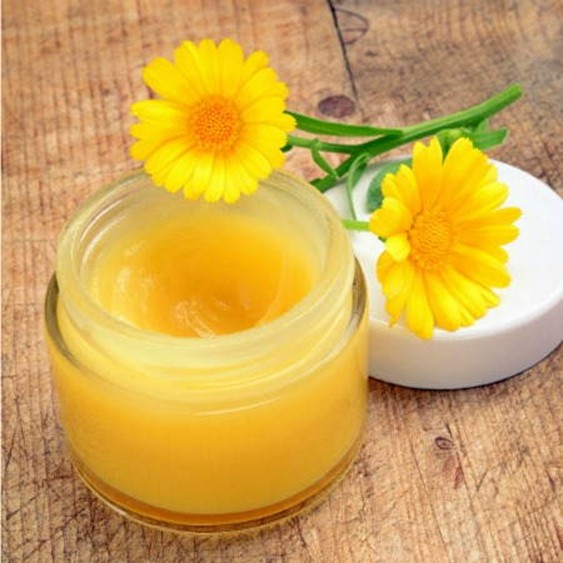
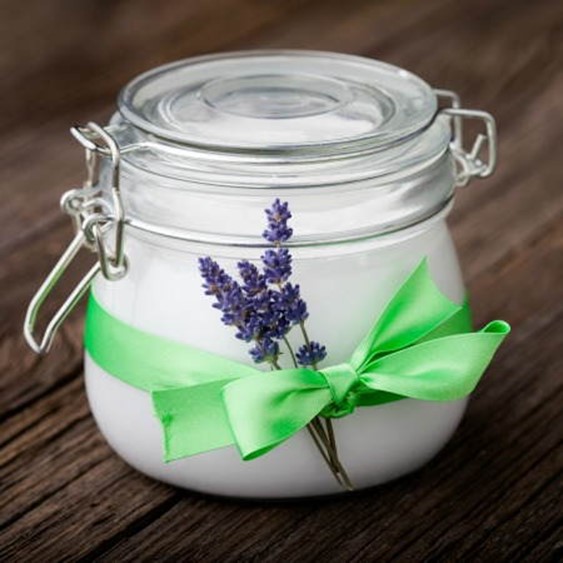
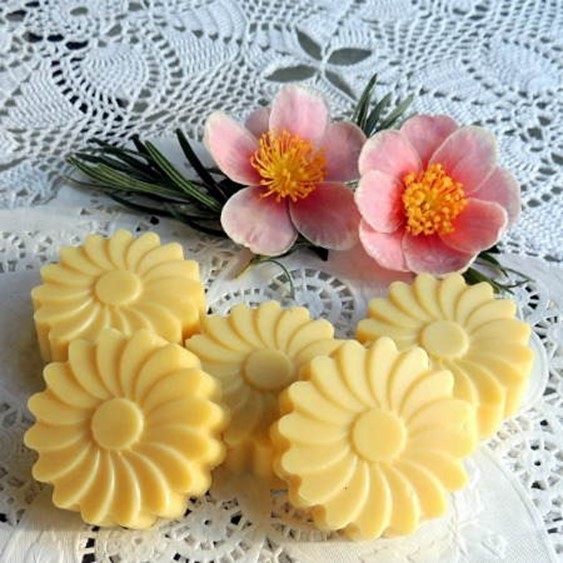
 Follow
Follow